Energy Efficient + passive solar plans: comparision
I found 2 plans I like, but I am not sure which one would work better, regarding suitability to the site, cost comparison, and energy efficiency. Please shed light with me:
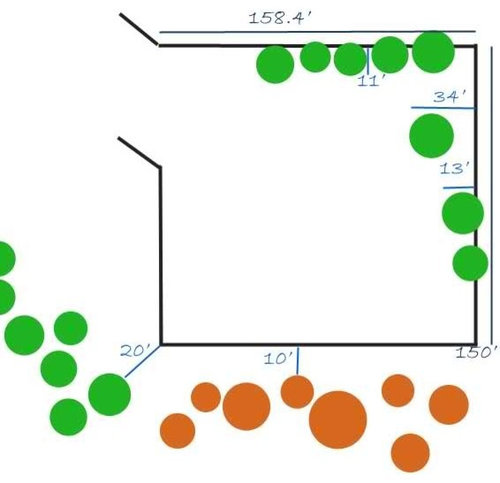
The lot with native ever green and deciduous trees along or outside property lines (green color=evergreen; orange=deciduous)
Plan1: 1520 sq ft energy efficient design $111,857 estimate cost-to-build without the extra added garage
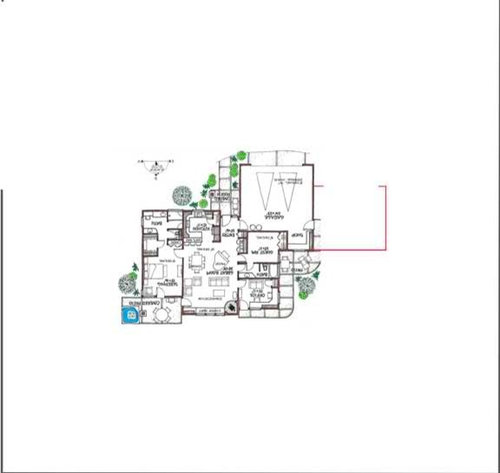
purpose of this photo: the ratio between the house plan and the site

detail of Plan1 with an extra added attached garage
Plan2: 1798 sq ft Energy efficient, plus passive solar design $132,315 estimate cost-to-build

ratio between house plan2 and the site
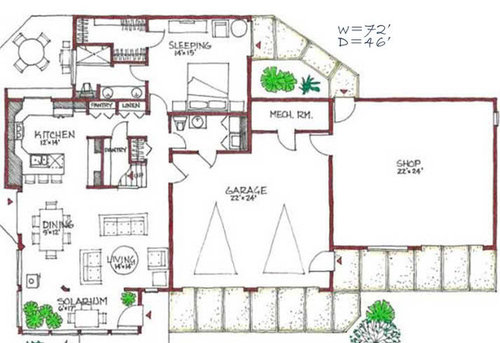
detail of plan2: love the architecture style yet the orientation designed of this plan does not fit with my site. As you can see the back of the house will face the entrance of the driveway. Although the back of the house looks equally interesting, is it OK to orient a house this way? The driveway will be even longer going from the front of the site to the rear to park into the garage???
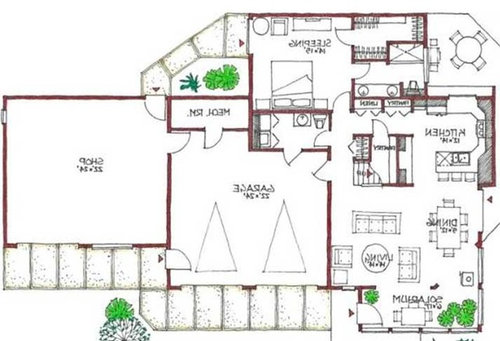
reverse of plan2: considering passive solar design, would the sun penetrate the solarium better this way???
I actually love the architecture of plan2, while love the openness of plan1. However, plan2 seems to be more energy efficient to me because of its passive solar design as well, while plan1 suits better for convenience as one room flows to another.
Anyway, I will have to decide this person decision myself, yet I would like suggestions and opinions comparing them both regarding the cost, energy efficiency, and suitability of the site. Thanks
Comments (24)
User
12 years agoAn effective passive solar house design must take into consideration the local climate. So, where is the property located?
Epiarch Designs
12 years agoHow exactly do you intend on making it "passive solar"?
Also how are you planning on making it energy efficient?
With the amount of corners and how the plans are actually stacked north to south rather then east to west, none of the options take good opportunity of solar gains, yet alone passive solar attributes.
The shell and details of the floor, walls and roof are also super important to have a good performing house.Related Professionals
Holtsville Architects & Building Designers · Plum Design-Build Firms · University Park Home Builders · California Home Builders · McKinney Home Builders · South Sioux City Home Builders · Euclid General Contractors · Greenville General Contractors · Hercules General Contractors · Hutchinson General Contractors · Jericho General Contractors · Leavenworth General Contractors · Miami Gardens General Contractors · Union Hill-Novelty Hill General Contractors · West Lafayette General Contractorschueh
Original Author12 years agoI am a little south of Atlanta Georgia.
From what I understood, passive solar house plans should have longer length on the south side. I kind of don't understand these two plans either, yet I trust them because they were designed by green architects
Epiarch Designs
12 years agoWhat is pushing you to look into passive solar for your climate? It is typically utilized in heating dominated climates. I would recommend looking into simply passive gains and light harvesting rather than true passive solar (which I have a hunch you may not realize the difference between passive solar and just solar heat gains).
I would encourage you to look into super efficient construction rather than passive solar homes. (which none of your examples really are IMO). Your construction and air sealing will have a far greater impact on your efficiency in your climate rather then passive solar designs.
As a green designer/architect, I have spent a great deal of time over the last few years looking at plans online out of curiosity. I have yet to find any plan online by "green architects" that I would feel comfortable with recommending to anyone. The trick about super efficient/green design is really climate dominated and generic or universal plans online can be a starting point, but you really need a compitent green architect in your area to design a custom home to fit the site, climate, orientation, etc.chueh
Original Author12 years agoLzerarc, thank you for your reply. O.K. Now I understand more about the reasons why using passive solar.. I see what you are saying. you are right; i did not realize the difference between passive solar and solar heat gains. What I really want to do, now I realize, is to use solar heat gains, simply utilizing sun through south windows. I thought that as long as not using any mechanical ways to heat a house up is called passive solar. How low and wide of the eaves and their orientations are, as well as how low or high the windows are placed, to have proper solar heat gain, is called passive solar??? So.. please bear with me, and would you mind explaining the difference briefly?
Thanks
chueh
Original Author12 years agoLzerarc, I forgot to answer your question. The motivation of having heat gains for the winter was because my electricity bills have always been about 40% more that those in summer with A/C running. Although it sounds strange, it is the fact. However I shouldn't use this single fact to determine what my future house needs to be. Do you have any suggestions for me?
Thanks
david_cary
12 years agoWhen you get far enough south, it is hard to get reasonable amount of solar gain without causing more of an a/c load. There is just a limit to what can be done.
I'm guessing your current house has a significant problem. In NC, we are pretty balanced. South of Atlanta, you should be pretty cooling dominated. Are you on a heavily wooded lot? That along with poor insulation might explain your current use.
I can't really figure your diagrams but you want a lot of southern windows that are heavily shaded with deciduous trees. Ideally you would have some masonry inside the house that will heat with those windows. These should be windows that actually have a higher SHGC (which might be an issue with code). Then you want to minimize East and West windows or have them heavily shaded also.
With deciduous trees, you can have passive heat in the South. It just isn't usually necessary or "worth it" with just a decent shell. I'd suspect your heat should be about $.10 a sqft per season with just a good envelope and well designed HP. Passive solar could make most of that go away but the payback maybe prolonged. In NC, I am about $.13 a sqft and had no option for passive solar and my envelope/design could be better. $.10 would be easy even without any passive solar.
dekeoboe
12 years agoIf you are interested in looking at some passive solar, passive cooling house plans, you might want to look at the ones at www.sunplans.com. We thought about getting one of Debra Coleman's plans or hiring her to design our home, but then went with a local architect. Her website also contains basic information on passive solar design.
thull
12 years agochueh- if your electric bills are higher in winter, and presumably you have a heat pump with electric strips, your strips are probably running too much. That's more a control issue than a need-a-new-house issue.
I'd make a trip into ATL and visit Southface, a non-profit specializing in energy-efficient buildings. They're in Midtown near the Civic Center. They have a library of green building/design books and periodicals. I also would bet that they could point you to a lot of examples of where energy-efficient homes have been built that you could visit (at least from the outside) to get a better idea of what's being done in the ATL area.
I believe there are several houses either under Southface's rating system (Earthcraft) or maybe even LEED-H at Serenbe. This development is located in the Chattahoochee Hill Country in south Fulton (of I-85, S of the airport).
I still have the impression that green/tight building in GA is still a premium product. We only recently have implemented contractor licensing, and there's little if any push to enforce the energy code we already have from local/state government. Many, many old dogs who haven't learned the new tricks yet.
Good luck.
Here is a link that might be useful: Southface
Epiarch Designs
12 years agoAs mentioned above, passive solar in your climate is a fine line between balancing heat gains and over heating in the summer. Propper window design, glass spec'ing and overhang sizing can do a lot to help prevent that from happening however. The biggest difference between passive solar and simply solar gains is passive uses a heat storage method to trap and store gains during the day to release throughout the night, cool down, and start over again the next day collecting heat. Solar gains simply uses glazing to heat the space up during sunny days and none of the heat is stored for release during the night. THe room starts to cool back down when the sun stops shinning. On sunless days, you really have no gains. THe advantage this has it is still allows your furnace or heat source to not have to run for 6-8 hrs a day depending on your day (and more depending on how tight your home is and insulated value). It also allows you to not have to have a mass heat storage material in your home, which a lot of people do not always like.
If I were you, for your climate I would focus on super tight construction first, and use special window placement and roof designs to allow solar gains. The tight home will take care of air leakage which will be your biggest issue for your climate and will do wonders for your ac/electric bill.
Google passive solar and solar gain design and read whatever you can find. ALso check out build it solar website too. A lot of info is out there to learn, take advantage of it. Feel free to email me with other quesitons/plan help too if you want.
I did a super tight house in a heating dominated climate (zone 6) that used solar gains to help offset some of the 24 hr heating requirements. I was able to reduce the heat load by about 40% using solar gains. As the house stands now, the owner said the furnace never runs on a sunny day, and due to how tight the home is and insulated value (r38 in the walls, r65 in roof), on a sunny day the furnace doesnt kick on unitl 3-4 hrs after the sun goes down. Their 2600 sqft house costs about $45 worth of electric heat a month when the temp is near 0 all day and night.SpringtimeHomes
12 years agoI agree with Lzearc although I feel that passive solar design is still a great fit for your climate. Debra Colemans Sunplans site has one of the best selections of existing plans and many of them are built in her home state of Alabama. Just because a climate is cooling dominated doesnt mean a home cant benefit greatly from passive solar design. I feel its much less of a fine line myself. I also disagree on some of the finer details mentioned regarding thermal mass but we are in total agreement that you are best served by focusing on a building envelope that is airtight and has minimal thermal bridging.
Thull is correct in that Southface is your best resource for building in your area.
For a great article IMO on passive solar design check out this article.
Here is a link that might be useful: Cost Effective Passive Solar Design
aj33
12 years agoLzerarc.
I am just curious about the temperature range during 3-4 hours after sun goes down and furnace kicks in.
Drop in inside temperature must be minimal, otherwise the house temp would have to be rather high when the sun starts to go down.
Thanks.
AJ
Epiarch Designs
12 years agoAJ
Super tight, highly insulated homes take a long time to change in temp. When I say super tight and insulated, I mean far far above code and even energy star. The sun in these cases heats the space up higher then what the furnace thermostat is set at, but not too much more. Stat is set at 69 typically if I recall correctly, the sun warms it up to around 72-75. So there is up to around a 5 degree drop in 4 hours with super low exterior temps. Typical "code" built homes will have this same drop in 30 minutes.
There is a blog/webiste that is titled Equinox house or something. It is a solar designed house build with thick (12" I think) SIPs and super tight. They have a picture of recording the temp on the inside of the house in the middle of the winter WITHOUT any mechanicals installed yet. It said 64 (I think) inside the unheated house just from the sun's heat coming in and being trapped by the insulated home.User
12 years agoSolar planning in the South is mostly about how to minimize the solar gain in the summer rather than maximize it in the winter. The two are not mutually exclusive, but if you try to take designs meant for Northern living and recreate them here, you've just created a huge load on your AC in the summer, and it's probably even too hot in most of the winter months as well. There are plenty of passive solar methods applicable for the South, but you have to engage the services of someone who fully understand them. You also might research solar designs meant for the western deserts as those would be easier to adapt to the maximum cooling season needs of the South than the heating season needs of Northern plans.
SpringtimeHomes
12 years agoIam not so sure about that. A simple passive solar design like our Springtime Cottage would work nearly as well in N.Georgia as it would in New England.
For the most part minimizing solar gain is about avoiding East but mostly West windows. This is a good thing for Northern homes too. The sun is easily kept out of the South windows by overhangs.
You dont need an expert to help you with passive solar principles but it could help if you dont want to spend the time or like the reassurance. I bet most laypeople on this forum could grasp a better understanding of passive solar than most architects with a little bit of good research.
david_cary
12 years agoSpringtime - I'm curious what the difference between East and West windows would be in a hot climate. The gain should be the same - although West windows are more important for sizing equipment (although not factored in a Manual J).
The problem with South windows even with overhangs is that a/c runs when the sun is pretty low. So a decently constructed 3000 sqft house might have $500 in heating costs (which is probably shooting high in GA). Design it with lots of south windows and you might get down to $300 but you might add $100 in a/c costs - so while you have helped, it isn't as much as you'd like. It is late Nov and there is some need for a/c today. The sun is mighty low....
Either way, the cost savings is so minimal, it probably couldn't payback for a special design.
SpringtimeHomes
12 years agoGood question. Perhaps Iam a bit out of my league as I couldnt tell you the point that West becomes more important than East. I do know in our NC climate, which includes most of N georgia, that energy modeling software penalizes west windows more than East. This is true the further North one goes. I think its because things are cooler when the Eastern sun is shining but one is fighting overheating more as the sun is setting. I believe Manual J does account for it.
I will concede that Passive Solar homes tend to suffer from overheating during unseasonably warm weather of mostly fall months, which is also a great time of year to open windows alleviating the effect. However just because a home has more South windows does not necessarily mean the cooling load will be higher.
The less windows one uses on the other sides of the house the more this is true. This also helps costs to stay balanced and means that Passive Solar homes do not have to cost anything extra through special design. As for the more important virtues of Airtight and Continuous insulation, thats another story..
Passive solar homes in hot climates probably will experience a slightly bigger cooling load but as long as the other variables are addressed (overhangs, airtight, insulation) then there is still a year round benefit by the bigger reduction in heating.
david_cary
12 years agoSpringtime - a couple of things.
Aren't you from the mountains? There is no such thing as "our NC climate". The difference between the coast and mountains is pretty dramatic. The OP talked about being from south of Atlanta which to me (and I really don't know) would be warmer than Raleigh - not at all like N Ga.
Two different Manual J's that I have seen showed the exact same heat gain from E and W windows which I believe was 60 btu/hr/sqft. Who knows what SHGC that is - I really think it is clear glass. In a hot humid climate, there isn't much difference between E and W when it comes to energy use. The a/c is on all the time in the summer due to humidity. In the mountains, I suspect the windows could be open in the morning and so West windows would be much worse. Obviously for sizing, West windows impart their effect when other gains are at their highest - so it should matter. But check your manual J software because the two I've seen were the same.
The biggest problem with passive solar is that not everyone can do it. I built in a subdivision with a house 20 feet off my south side. I could have done a little but they would have been extra windows I otherwise wouldn't have done since the view sucks. Then there is the downside of extra windows as far as heat losses and gains.
Now I am building at the coast. Not about to minimize the ocean view windows which are to the East (but actually SE which helps).
Taken as a whole, building in an area with less density allowing passive solar imparts a whole new level of energy use (mainly in car gasoline use). There may never be enough urban planning to allow passive solar in a majority of houses.
User
12 years agoI'm located in a hot Southern climate. We're technically north of Atlanta in latitude, but much flatter in altitude which can make a big difference. Someone south of Atlanta is likely to experience similar weather. I have friends in Warner Robbins, and our summer weather is usually within a few degrees of each other.
Delta heat and humidity is brutal. We get MUCH hotter and humid springs and falls than most realize. And "humidity season" is about 10 months long. The Gulf is always swirling up massive amounts of moisture into the region. It's basically summer from April til October. Heating season is only 3-4 months long here while cooling season can run 8-10 months. There are months that overlap. Hot in the day and cool at night. It's not so much the temperature in those overlap months as it is the humidity. 81 degrees and 95% humidity is pretty darn clammy and miserable and so needs the AC to dehumidify the air. Same with 55 degrees and 90% humidity. It feels colder than it actually is because of the humidity and putting on a sweater only helps marginally. Gotta run the heat a bit to make the temp more comfortable. There are about three weeks in fall and three weeks in spring when you can actually open the windows and not suffer due to letting the humidity into the house.
Planning for solar heat gain in the winter is practically ludicrous with those conditions. It's not that darn cold to begin with! Add in a bit of low sun solar gain to your average 40-50 degree winter high temperature and the house will get to 80 in no time. My neighbor's attached Southern facing un-HVAC'd sunroom regularly gets to 95 degrees on a sunny December day. In summer, even with decent overhangs, it's 130 in there by noon. Try to work with that for your home's cooling load!
This is why I stated that solar planning for the South is more about minimizing the solar gain rather than trying to harness it for the brief heating period that happens. Your major energy dollars spent here are in cooling. Minimizing loads to the cooling system with the home's design is what pays off here---IF, as David says, the homeowner has the luxury of enough room to accomplish that. 95% of those building will do so on lots too small to do much more than trying to get the right windows for those Southern facing heat gainers.
SpringtimeHomes
12 years agoDavid, great points. As Ive seen your good recommendations to others, using the Building Science Corporation's hygrothermal guide, all of NC including just South of Atlanta is in the Mixed Humid climate zone. Temperatures will vary across it but for the most part we can all follow the same best practices. There on the extreme coast you are just within the Hot-humid climate boundary.
I wont push the East-West window thing for down there but I know in our climate West is worse. If I had views I probably wouldnt avoid them either. Overhangs are a great option for those situations but I know youre restricted by the high wind zone.
In total agreement in that city infill is important and that passive solar is not right in many situations.
livewireoak, great points by you and david that the cooling load in the South is mostly about de-humidification. Southern window gain shouldnt really affect this part of the equation. If the heat pump tends to short-cycle, more sensible gain could actually help the situation.
Not sure about you example being used to discourage passive solar design though. We dont know what else is contributing to that specific situation but my first suspect would be too much glazing per square foot, non vertical glazing(skylights?), followed by improper overhangs, orientation(west of South)and lastly insufficient thermal mass.
You say there are 3-4 months of heating. Passive solar design with a good thermal envelope could be eliminating 40-90% of those needed BTUs. The minimal increase in cooling costs (thanks to properly sized overhangs and glass ratios) will still equal out to less BTUs needed throughout the year.
Here is a link that might be useful: BSC's hygrothermal building guide
david_cary
12 years agoYeah - Mixed can mean quite a few different things - the mountains have roughly half the CDD and 30% more HDD so in my mind that is pretty different. The coast is 3 times the CDD and 1/2 the HDD. But technically they are all mixed.
I personally think it is laziness in the maps. Asheville has 4000+ HDDs and 700 CDD. That is a cold climate in my book since the heating needs vastly outweigh the cooling needs. It is obviously all about altitude.
SpringtimeHomes
12 years agoAltitude certainly matters. Its interesting though that if you were to energy model two identical homes in Atlanta and Asheville they would end up with different BTU needs but nearly identical tonnage recommendations for typical heat pumps. I would guess the occupant behavior factor is bigger than the climate difference.
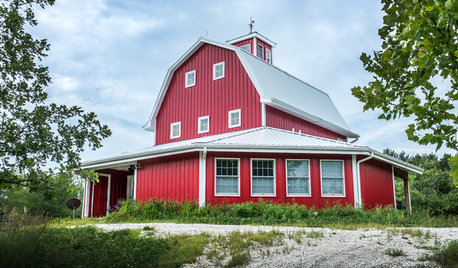
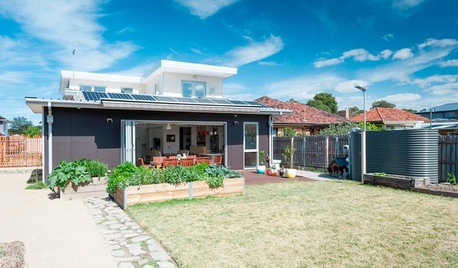
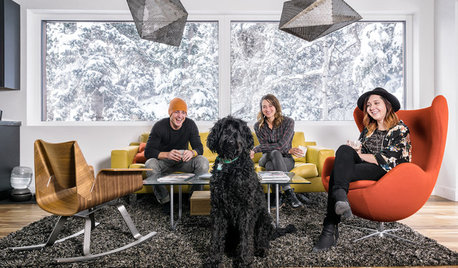

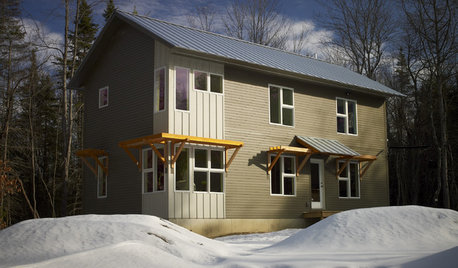
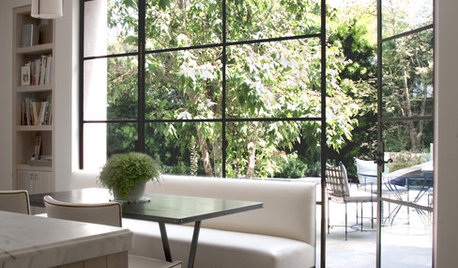
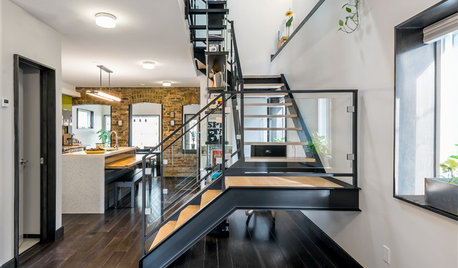
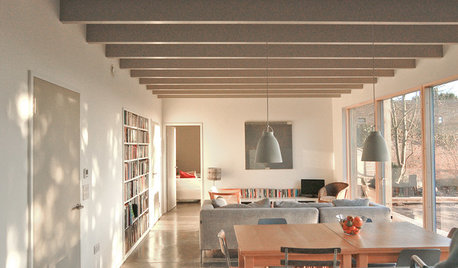
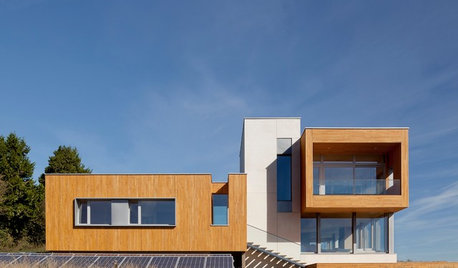
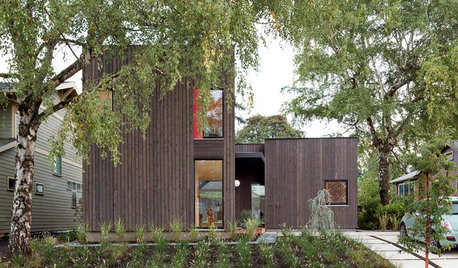






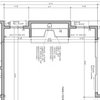

chuckfh